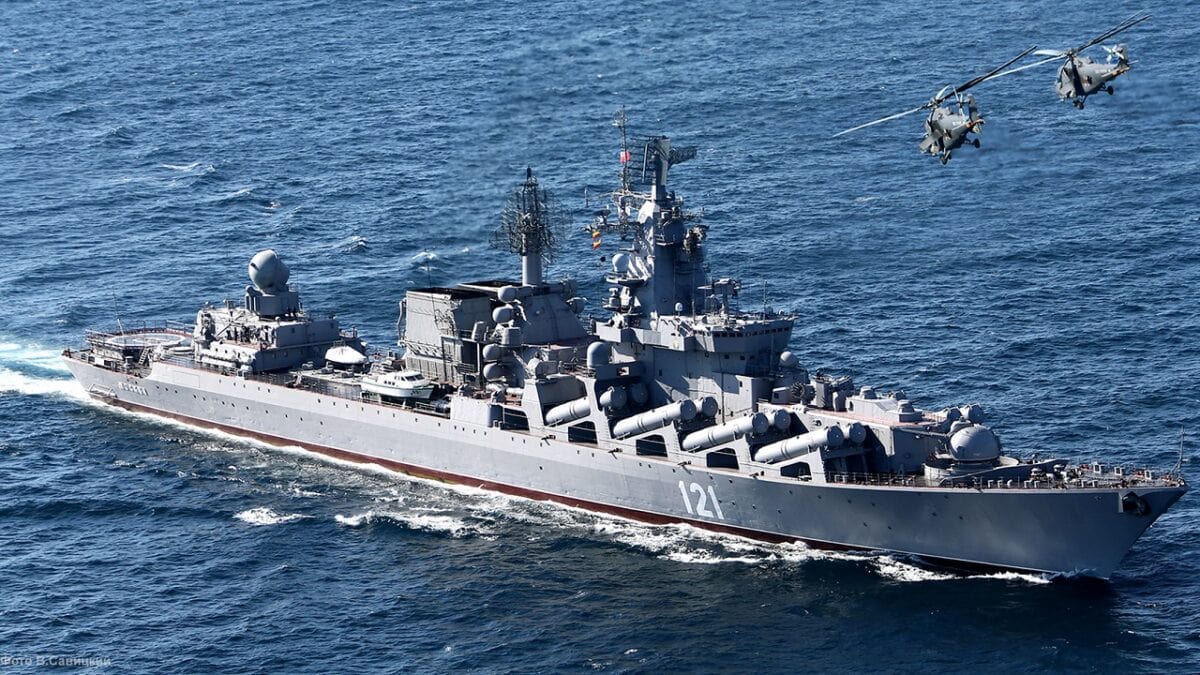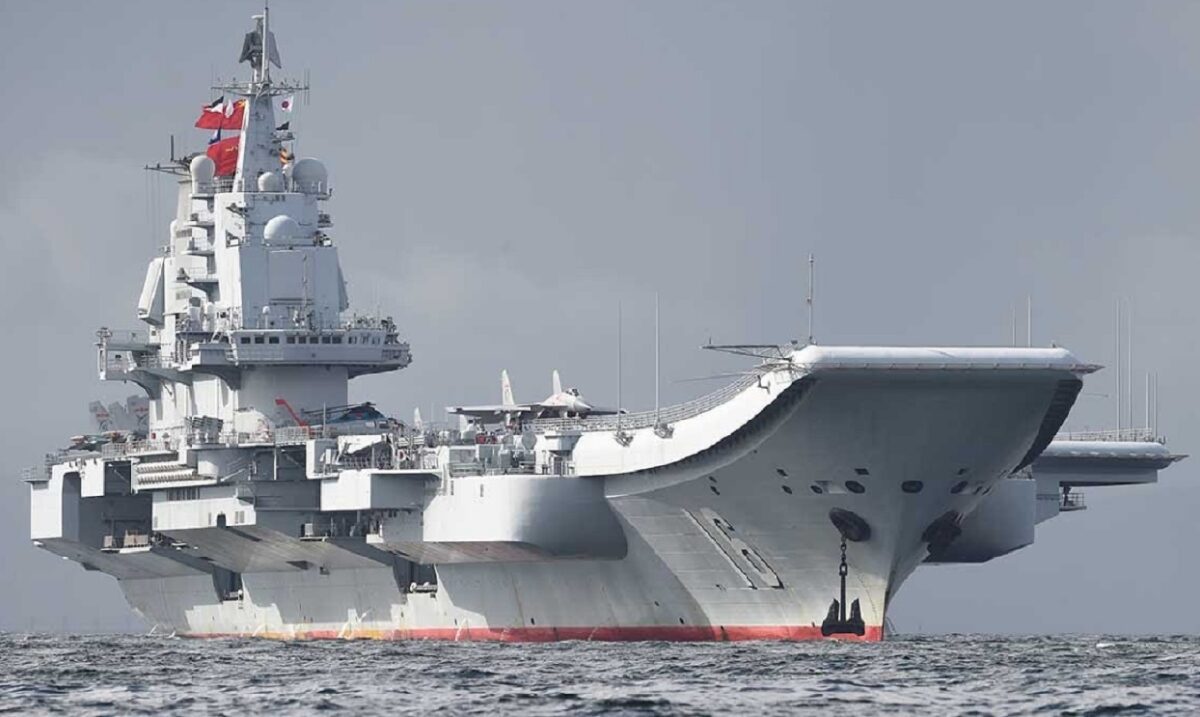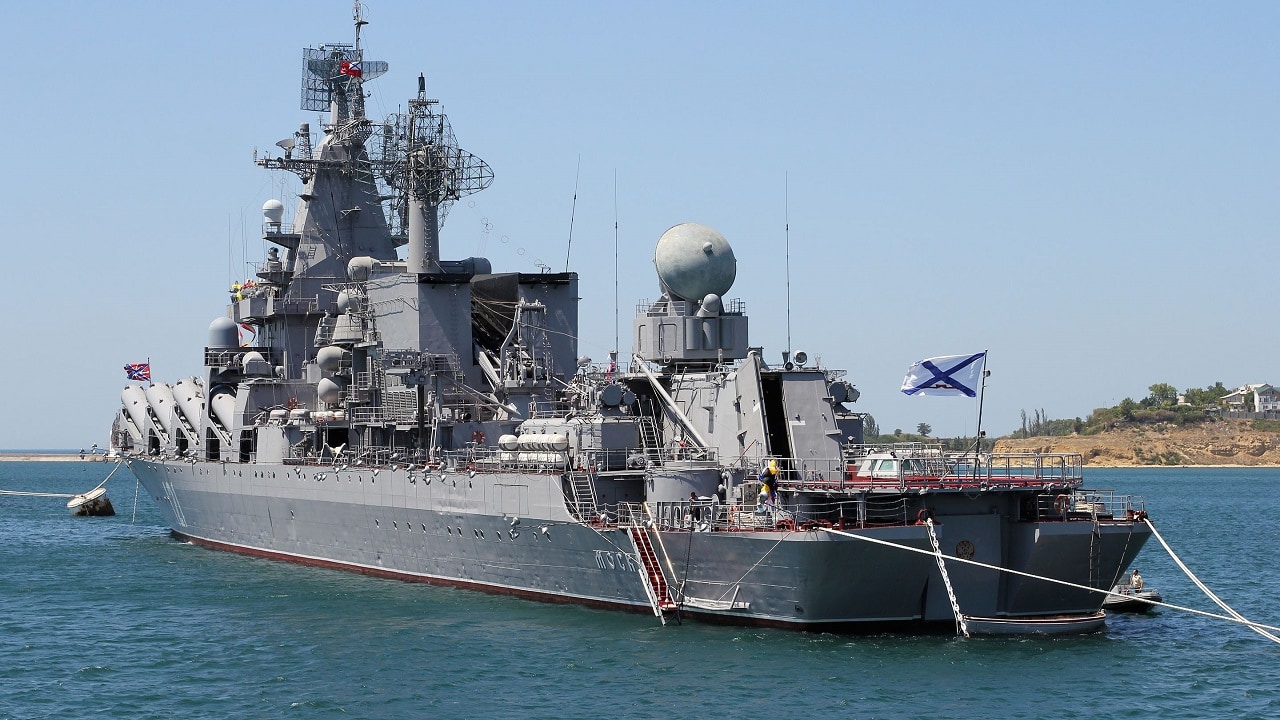China could not have been pleased looking at the sinking of the Moskva as its own ships could meet the same fate in a war: The Russian Navy’s sole aircraft carrier, Admiral Kuznetsov, remains in port in Roslyakovo, Murmansk Oblast, and is undergoing repairs. The “cursed” warship was damaged in October 2018 when Russia’s biggest floating dry dock, PD-50, sank, causing one of its 70-ton cranes to crash onto the ship’s flight deck, leaving behind a 19-square-meter (200 sq ft) hole. Just over a year later a major fire broke out onboard the Russian Navy’s flagship, and two people were killed and fourteen more suffered injuries from fire and smoke inhalation.
It was reported in March that the Admiral Kuznetsov will likely remain in dry dock until at least September for further repair work. Yet, that might be for the best – because at least it can’t be (easily) sunk there. The same may not be true of the other Soviet-era aircraft carriers that remain in service around the world.
Are Other Soviet Carriers Vulnerable?
Currently, the former Kiev-class aircraft cruiser Admiral Flota Sovetskogo Soyuza Gorshkov is now in service with the Indian Navy as the INS Vikramaditya; while the former Soviet Navy Admiral Kuznetsov-class aircraft cruiser Varyag was sold by Ukraine to China, and completed in 2012 as Liaoning.
The vulnerabilities of those carriers – especially the People’s Liberation Army Navy’s (PLAN’s) Liaoning – are now in the spotlight following the sinking of the Russian Navy’s Black Sea Fleet flagship Moskva earlier this month. The ease with which the Moskva was sunk has apparently shocked Chinese defense officials, who fear the Liaoning could be similarly vulnerable in a military conflict, the Nikkei reported.
Lessons from History
The loss of the Moskva was the first Russian fleet flagship to be sunk during war since the Knyaz Suvorov, the flagship of Vice-Admiral Zinovy Rozhestvensky, commander of the Imperial Russian Navy’s Second Pacific Squadron during the Russo-Japanese War in May 1905. That warship was sunk by Japanese torpedo boats, and other than twenty wounded officers who were evacuated by a destroyer, there were no survivors.

Moskva Cruiser. Image Credit: Creative Commons.
Moreover, since World War II there has been only one other large warship that was sunk in combat – the ARA General Belgrano, an Argentine Navy cruiser (former U.S. Navy Brooklyn-class cruiser that had seen service in World War II), which was struck by a Royal Navy torpedo on May 2, 1982 during the Falklands War.
China Has to Be Worried
The sinking of the Moskva has had a significant impact on the thinking of Chinese security officials, Nikkei also reported. The Moskva was sunk after being hit by two Ukrainian Neptune anti-ship missiles, although Russia hasn’t been all that keen to admit as much. What should worry the Chinese officials is that Liaoning was built at the same time – and in the same Ukrainian shipyard in Mykolaiv – as the Moskva.
Armor standards used in Russian warships built during the Cold War suggest that the Liaoning would not likely fare any better than the Moskva against anti-ship missiles, including those now employed by Taiwan.
“If that is true, it means that China’s much-vaunted naval power is nothing but a paper tiger,” a Chinese source lamented to the Japanese news outlet. Since its commissioning in 2012, the Liaoning has been considered one of the Chinese Navy’s key assets. It often sails near Taiwan, including through the Taiwan Strait. However, Taiwan is better armed than Ukraine, and the government in Taipei has recently concluded a deal to purchase 100 ground-launched Harpoon anti-ship missiles, as well as additional variants that could be fired from ships, submarines, and aircraft. It also should be noted that Taiwan also has its own domestic anti-ship missiles as well.

Image: Creative Commons.
To counter an amphibious invasion of the self-governing island, it has been suggested that Taiwan could need to sink seventy percent of an attacker’s fleet. It is very likely that any PLAN aircraft carriers would be prime targets. Yet, given the recent sinking of the Moskva, and the fact that Taiwan will have the capacity to produce 113 of its Hsung Sheng anti-ship missiles per year after the Chungshan Institute of Science and Technology’s manufacturing facilities come online later this year, Beijing may want to keep its carriers as far from the island as possible. But then again, one would have to assume they know this, considering they have their own potent “carrier-killer” missiles.
Now a Senior Editor for 1945, Peter Suciu is a Michigan-based writer who has contributed to more than four dozen magazines, newspapers and websites. He regularly writes about military hardware, and is the author of several books on military headgear including A Gallery of Military Headdress, which is available on Amazon.com. Peter is also a Contributing Writer for Forbes.

